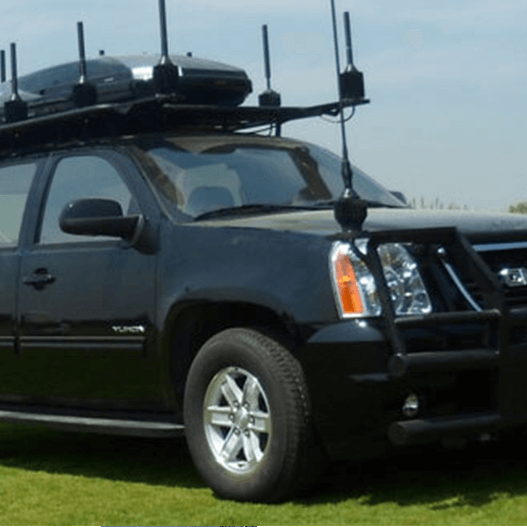RCIED Jamming System – Vehicle Installed
LIGHTNING
Overview:
The LIGHTNING is a hybrid jamming system consisting of a continuous jamming and a reactive jamming module, developed for vehicle installation. The continuous jamming creates a safe zone in the near-field. The reactive jamming module detects any adversarial signal stronger than the noise level created by the continuous jamming. The detected powerful adversarial signals are precisely blocked at the exact channel bandwidth with the full power of the dedicated amplifier. The reaction (detection & jamming) time of 90 micro-seconds (100 MHz bandwidth) allows to detect and block even the fastest frequency hopping radios available on the market (10’000 hops / second).This allows to block high power transmitters of terrorists (HF, VHF, UHF radios) also very close (e.g. 15-20 meters) to the receiver. The reactive jamming module may reach jamming distances 100 times larger than distances achieved by common jammers (e.g. considering 100 W output power dedicated on a channel (e.g. 1 MHz bandwidth) compared to 100 W output power distributed by sweeping on a frequency wideband of 500 MHz).
The reactive jammer module may optionally be activated with reactive mode (detection & jamming) or work in continuous jamming mode only (without detection).
Application:
RCIED (Remote Controlled Improvised Explosive Devices) RF Jamming System for vehicle installation
Features:
- Detection of adversarial RF signal: the jamming system offers a real-time RF detection feature, allowing to detect any adversarial RF signal instantaneously and to jam on the specific detected channel / frequency band (Reactive Jamming).
- Four FPGA chips control 24 DDS chips. Each DDS chip controls an individual amplifier resulting in 24 simultaneous jamming signal generations. =>Different jamming signal generations may be combined; covering the same frequency band, this results in high efficiency of jamming in the far-field as well as in the near-field.
- DDS / DSP technology: any kind of modulation may be generated.
- The jamming signal for each individual frequency bandwidth may be adapted in order to cover in an efficient way the adversarial signal => the signal for each frequency band will be generated with adapted signal parameters:
Speed of sweeping, carrier step size, power, channel raster and modulation.
- Each communication medium (potential threat) does have specific RF characteristics and waveforms. Therefore the jamming signal is generated in each bandwidth with adapted characteristics covering each individual threat efficiently.
- Tone and DTMF code transmission combat VHF/UHF radios efficiently at large distances.
- Programmable filters offer precise and selectable channels for friendly communication.
- LIGHTNING was demonstrated at the NATO trial in Belcoast in the class of RCIED Jamming Systems and achieved the best results (jamming distances).


